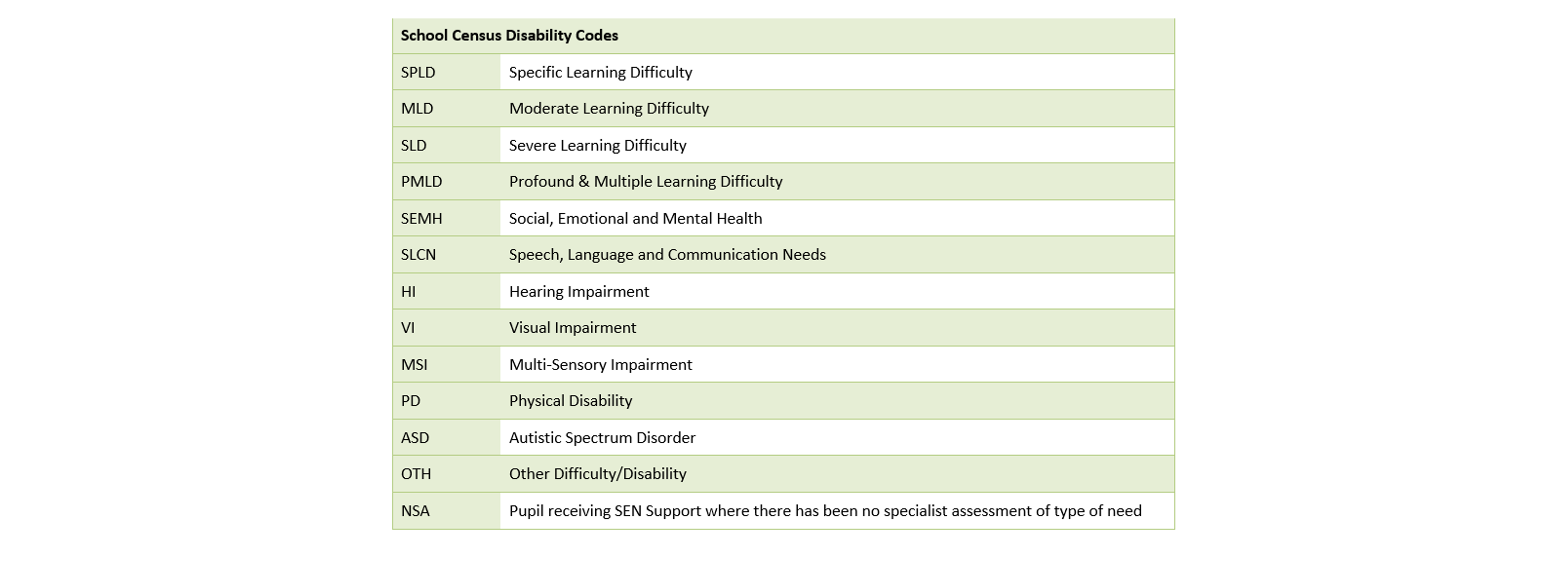Identification and categorisation of SEND
Identification and categorisation of SEND
Identification and categorisation of SEND
Most schools and colleges choose to hold a ‘SEND list’ to support the identification of need across the setting. All schools and colleges are asked to categorise the nature of the children and young people's SEND through the census data.
This data can be used to inform local strategic developments and commissions. It is therefore important that the identification of need is based on careful assessment over time and that an individual’s primary need is categorised accurately.
Assess-Plan-Do-Review (APDR)
To ensure an accurate classification is recorded, many SENCOs embark on a cycle of assess-plan-do-review (APDR) to fully explore the nature of a child/ young person’s SEND before recording the primary need. The primary need is the area of difficulty which requires the most support.
The primary need may be one of the following:
Communication and Interaction (ASD, SLCN)
Cognition and Learning (SpLD, MLD, SLD, PMLD)
Social, Emotional and Mental Health (SEMH)
Sensory and/or Physical Needs (HI, VI, MSI, PD)
The school census disability codes for each category of need are recorded in brackets above and defined in the table below.
-
 The PowerPoint and case study examples in the 'related files' section explains the different categories of SEND and how they may be recorded.
The PowerPoint and case study examples in the 'related files' section explains the different categories of SEND and how they may be recorded.